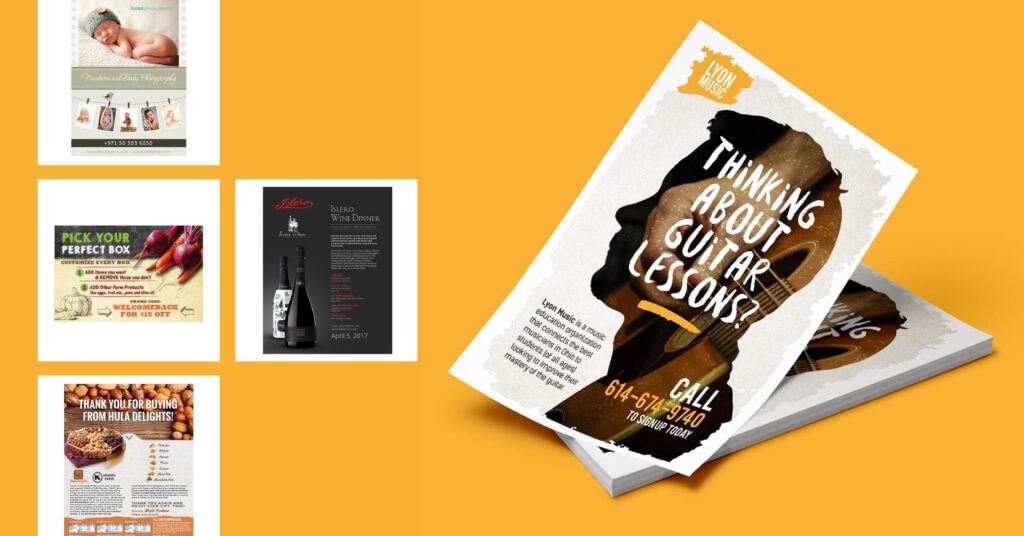Designing an eye-catching and effective flyer requires careful planning, creativity, and attention to detail. Whether you’re promoting a business, event, product, or service, a well-crafted flyer can capture attention, convey your message, and drive engagement. Here’s a comprehensive step-by-step guide to designing compelling flyers that resonate with your target audience.
Step 1: Define Your Objectives and Target Audience
Before diving into the design process, clarify your marketing objectives, target audience, and key messaging. Understanding your goals will guide your design decisions, content creation, and visual elements. Determine whether you’re promoting a sale, announcing an event, showcasing a product, or increasing brand awareness, and tailor your flyer’s design and messaging accordingly.
Step 2: Choose the Right Size and Format
Selecting the appropriate size and format for your flyer is crucial to ensure visibility, readability, and impact. Consider the content, images, and layout you plan to incorporate and choose a size that accommodates your design elements effectively along with your method of distribution.
Step 3: Develop a Compelling Headline and Message
Craft a compelling headline and concise message that captures attention, communicates your key message, and motivates recipients to take action. Your headline should be concise, engaging, and relevant to your target audience’s interests or needs. Use persuasive language, compelling visuals, and a clear call-to-action (CTA) to encourage recipients to learn more, visit your website, or contact your business.
Step 4: Incorporate High-Quality Images and Graphics
Select high-quality images, graphics, or illustrations that align with your brand, message, and target audience. Use visually appealing visuals that capture attention, evoke emotion, and reinforce your flyer’s theme or objective. Ensure that your images are relevant, high-resolution, and complement your design elements without overwhelming your content or distracting from your message.
Step 5: Choose a Consistent Colour Scheme and Typography
Select a consistent colour scheme and typography that aligns with your brand identity, message, and target audience. Choose complementary colours for your flyers that enhance readability, visibility, and visual appeal while reflecting your brand’s personality and aesthetic. Additionally, select legible fonts, font sizes, and text styles that ensure readability, hierarchy, and cohesiveness throughout your flyer.
Step 6: Organise Content and Layout Effectively
Organise your content, images, and design elements strategically to create a balanced, engaging, and visually appealing layout. Ensure that your flyer’s layout facilitates readability, navigation, and comprehension by incorporating clear headings, subheadings, bullet points, and whitespace. Maintain a logical flow, hierarchy, and emphasis on essential information to guide recipients’ attention and engagement.
Step 7: Proofread and Review Your Design
Before finalising your flyer design, thoroughly proofread your content, review your layout, and ensure accuracy, consistency, and professionalism. Check for spelling errors, grammatical mistakes, design inconsistencies, and alignment issues to maintain credibility, readability, and quality. Additionally, gather feedback from colleagues, stakeholders, or target audience members to identify areas for improvement and ensure your flyer resonates effectively.
Step 8: Print and Distribute Your Flyers
Once you’re satisfied with your flyer’s design, content, and layout, proceed to print your flyers using high-quality materials and printing techniques. Choose a reputable printing provider, and select the appropriate paper stock, finishes, and quantities based on your distribution strategy, budget, and objectives. After printing, distribute your flyers strategically in targeted locations, events, or channels frequented by your target audience to maximise visibility, reach, and impact.
In Conclusion
Designing compelling flyers requires careful planning, creativity, and attention to detail to capture attention, convey your message, and drive engagement effectively. By following this step-by-step guide and incorporating these essential elements, businesses can create visually appealing, impactful, and memorable flyers that resonate with their target audience and contribute to overall marketing success.






